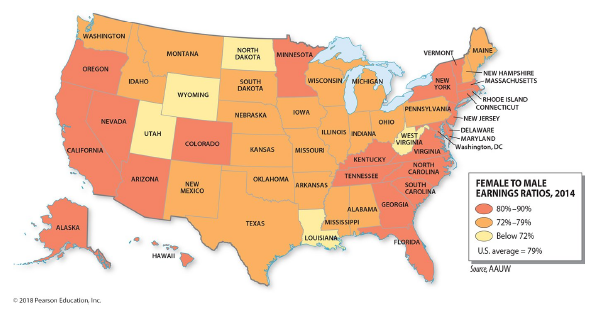The average depth of the world's oceans is approximately ________
A) 11,022 meters (36,161 feet)
B) 840 meters (2,756 feet)
C) 3,682 meters (12,080 feet)
D) 2,172 meters (7,126 feet)
E) 5,280 meters (17,323 feet)
C
You might also like to view...
Which region has the greatest overall gender gap in male-female earnings? A)

A) Alaska and Hawaii
B) Pacific Coast (California, Oregon, Washington)
C) New England (Massachusetts, Rhode Island, Connecticut, Vermont, New Hampshire,
Maine)
D) South/Southwest (Texas, Louisiana, Arkansas, Mississippi, Alabama)
E) mid-Atlantic (Maryland, Virginia, North Carolina)
The primary sources of the acidity in acid rain are the gases ________
A) SO2 and NOx B) O3 and VOCs C) NOx and N2O D) H2SO4 and NO E) O3 and SO2
Peak frequency as noted on a radiation curve is directly proportional to the
A. temperature of the emitter. B. frequency of waves emitted. C. temperature of emitted radiation. D. wavelength of waves emitted.
A slope material's strength and cohesion, the amount of internal friction between grains, and any external support of the slope define that slope's ____
A)mass wasting B)angle of repose C)dynamic equilibrium D)shear strength E)cohesive strength